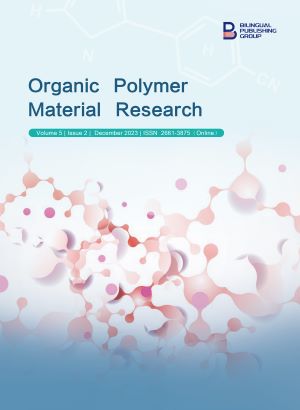-
264
-
172
-
171
-
154
-
150
Optimum Tuning for the High-efficiency Removal of Malodorous Gas Containing Hydrogen Sulphide Using Biological Treatment
DOI:
https://doi.org/10.30564/opmr.v6i1.6859Abstract
Hydrogen sulfide, as the main pollutant causing stench, has always been one of the main problems in environmental protection. In order to promote the practical application, a pilot study was carried out in this work on the biological treatment of hydrogen sulfide malodorous gas by the combined process of biological drip filtration on the basis of our previous laboratory-scale experiments. After enlarging the reactor in pilot experiment, various factors affecting the deodorization efficiency are compared in pilot scale and laboratory scale, and the optimum pilot condition are obtained. Furthermore, the mechanism of biological deodorization is analyzed. Based on the results of the comparison between the previous laboratory-scale and the pilot-scale of this work, possible bottlenecks and challenges of biological deodorization technology from pilot to industrial application are discussed. The technical approach proposed in this work provides an economical and efficient feasible scheme for biological deodorization in the industrial practice.
Keywords:
Biological deodorization; Optimum control; Hydrogen sulfide; Malodorous gas; PaddingReferences
[1] Quist, A.J.L., Johnston, J.E., 2023. Malodors as environmental injustice: health symptoms in the aftermath of a hydrogen sulfide emergency in Carson, California, USA. Journal of Exposure Science and Environmental Epidemiology. DOI: https://doi.org/10.1038/s41370-023-00561-x
[2] Piccardo, M.T., Geretto, M., Pulliero, A., et al., 2022. Odor emissions: A public health concern for health risk perception. Environmental Research. 204, 112121. DOI: https://doi.org/10.1016/j.envres.2021.112121
[3] Wysocka, I., Gębicki, J., Namieśnik, J., 2019. Technologies for deodorization of malodorous gases. Environmental Science and Pollution Research,. 26, 9409–9434. DOI: https://doi.org/ 10.1007/s11356-019-04195-1
[4] Barbusinski, K., Kalemba, K., Kasperczyk, D., et al., 2017. Biological methods for odor treatment-a review. Journal of Cleaner Production. 152, 223–241. DOI: https://doi.org/10.1016/j.jclepro.2017.03.093
[5] Bajpai, P., 2014. Biological methods for the elimination of odourous Compounds. In: Biological odour treatment. Springer Briefs in Environmental Science. Springer: Cham. DOI: https://doi.org/10.1007/978-3-319-07539-6_3
[6] Cho, K.S., Ryu, H.W., Lee, N.Y., 2000. Biological deodorization of hydrogen sulfide using porous lava as a carrier of Thiobacillus thiooxidans. Journal of Bioscience and Bioengineering. 90(1), 25-31. DOI: https://doi.org/10.1016/S1389-1723(00)80029-8
[7] Jiang, X., Tay, J.H., 2010. Microbial community structures in a horizontal biotrickling filter degrading H2S and NH3. Bioresource Technology. 101(6), 1635–1641. DOI: https://doi.org/10.1016/j.biortech.2009.09.074
[8] Shinabe, K., Oketani, S., Ochi, T., et al., 2000, Characteristics of hydrogen sulfide removal in a carrier-packing biological deodorization system. Biochemical Engineering Journal. 5(3), 209-217. DOI: https://doi.org/10.1016/S1369-703X(00)00061-9
[9] Barbusiński, K., Urbaniec, K., Kasperczyk, D., et al., 2020. Chapter 2 – Biofilters versus bioscrubbers and biotrickling filters: state-of-the art biological air treatment. Recent Developments, New Trends, Advances, and Opportunities. 29-51. DOI: https://doi.org/10.1016/B978-0-12-819064-7.00002-9
[10] Liu, C., Liu, J., Li, J., et al., 2013. Removal of H2S by co-immobilized bacteria and fungi biocatalysts in a bio-trickling filter. Process Safety and Environmental Protection. 91(1–2), 145–152. DOI: https://doi.org/10.1016/j.psep.2012.03.002
[11] Bai, L., Yan, S., Wang, T., et al., 2015. Experimental study on biological removal of malodorous gas containing hydrogen sulfide. Proceedings of the 2015 5th International Conference on Electric Utility Deregulation and Restructuring and Power Technologies (DRPT); November 26-29; Changsha, China. DOI: https://doi.org/10.1109/DRPT.2015.7432545
[12] Pudi, A., Rezaei, M., Signorini, V., et al., 2022. Hydrogen sulfide capture and removal technologies: A comprehensive review of recent developments and emerging trends. Separation and Purification Technology. 298, 121448. DOI: https://doi.org/10.1016/j.seppur.2022.121448.
Downloads
How to Cite
Issue
Article Type
License
Copyright © 2024 Rabia Sultana, Shizhong Yan, Lu Bai, Xingyu Jiang, Xue Yuan, Xin Zhang, Yinghui Han

This is an open access article under the Creative Commons Attribution-NonCommercial 4.0 International (CC BY-NC 4.0) License.




 Rabia Sultana
Rabia Sultana





